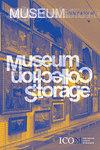Working to Create Value: Spanish Museums and the Challenge of Connecting with Generation Z
IF 0.4
4区 艺术学
0 ART
引用次数: 1
Abstract
Abstract The Covid-19 pandemic has temporarily emptied museums and drawn attention to an aspect of these cultural institutions that is often seen as secondary and subordinate to their physical presence: the digital dimension. Having been forced to close their doors, museums have sought to boost their online activity through a range of different initiatives. The most notable actions undertaken in terms of frequency are related to social networks. This situation obliges us to ask the question: have museums succeeded in achieving a meaningful online presence in their communities via social media? In terms of marketing and digital communication, content is understood as meaningful when it provides value to the audience. This value arises from the alignment of the objectives of the institution with those of the target audience; this makes it essential to understand the profile of users who comprise the communities of different digital channels. Drawing on a comparative analysis of the profiles of museum visitors and those of social media users, this paper addresses the challenges of connecting on social media with the generation known as Generation Z (a population currently between 14 and 24 years of age). To do so, it attempts to define this generation and determine how it uses social media, taking advantage of the work already carried out by Spanish museums on their social media profiles during lockdown to establish how museum institutions can make themselves more relevant to this demographic segment in Spain and beyond.努力创造价值:西班牙博物馆和与Z世代联系的挑战
2019冠状病毒病大流行暂时清空了博物馆,并引起了人们对这些文化机构的一个方面的关注,这个方面通常被视为是次要的,从属于它们的实体存在:数字维度。在被迫关门之后,博物馆通过一系列不同的举措寻求促进其在线活动。就频率而言,最显著的行为与社交网络有关。这种情况迫使我们提出这样一个问题:博物馆是否成功地通过社交媒体在其社区中实现了有意义的在线存在?就市场营销和数字传播而言,当内容为受众提供价值时,内容才被理解为有意义。这种价值源于机构的目标与目标受众的目标一致;这使得了解不同数字渠道社区的用户概况变得至关重要。通过对博物馆参观者和社交媒体用户的资料进行比较分析,本文解决了在社交媒体上与Z世代(目前年龄在14至24岁之间的人口)建立联系的挑战。为了做到这一点,它试图定义这一代人,并确定他们如何使用社交媒体,利用西班牙博物馆在封锁期间在社交媒体上已经开展的工作,以确定博物馆机构如何使自己与西班牙及其他地区的这一人口群体更加相关。
本文章由计算机程序翻译,如有差异,请以英文原文为准。
求助全文
约1分钟内获得全文
求助全文
来源期刊

MUSEUM INTERNATIONAL
ART-
CiteScore
0.60
自引率
0.00%
发文量
0
期刊介绍:
In its new revised form Museum International is a forum for intellectually rigorous discussion of the ethics and practices of museums and heritage organizations. The journal aims to foster dialogue between research in the social sciences and political decision-making in a changing cultural environment. International in scope and cross-disciplinary in approach Museum International brings social-scientific information and methodology to debates around museums and heritage, and offers recommendations on national and international cultural policies.
 求助内容:
求助内容: 应助结果提醒方式:
应助结果提醒方式:


